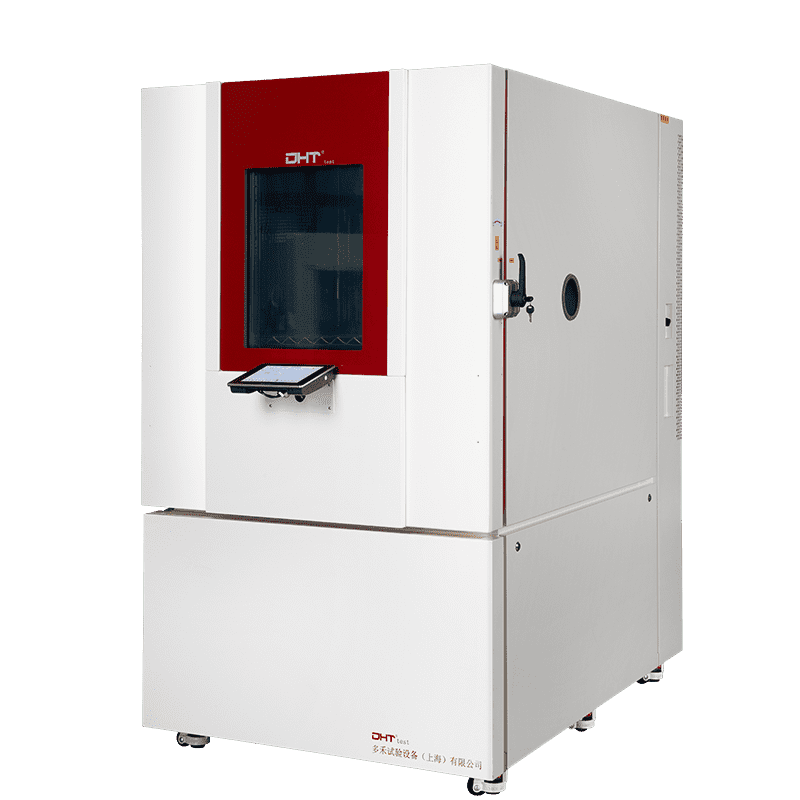What Is Vibration Testing Equipment?
Key Objectives of Vibration Testing
-
Validate structural strength and durability: Analyze a product’s response under specified frequency and acceleration to prevent cracking, loosening, or fatigue.
-
Identify early-stage failure risks: Uncover hidden design flaws through accelerated stress screening.
-
Support design optimization: Provide actionable insights for material selection, structural layout, and process improvements.
-
Ensure compliance with standards: Meet testing requirements of internationally recognized specifications such as MIL-STD-810, IEC 60068, and GB/T 2423.
-
Simulate transportation scenarios: Especially for export or long-distance shipment, verify packaging integrity and product resilience.
Core Components of Vibration Testing Equipment
-
Shaker: The heart of the system, responsible for generating controlled vibration waveforms. Common types include electrodynamic shakers for high-frequency, low-displacement applications, and hydraulic shakers for low-frequency, high-displacement tests.
-
Power Amplifier: Converts low-level control signals into high-power currents to drive the shaker with precision.
-
Steuergerät: Configures vibration parameters such as frequency, acceleration, and displacement, while providing real-time closed-loop control and data acquisition.
-
Sensor System: Typically includes accelerometers to monitor and record the sample’s dynamic response throughout the test.
-
Fixtures and Mounting Hardware: Secure the specimen to the shaker table, ensuring test stability and data accuracy. Proper fixturing is essential for valid results.
Common Types of Vibration Tests and Their Applications
1. Sinusvibrationstest
-
Purpose: Uses fixed or swept frequencies to identify resonance points and assess structural responses.
-
Applications: Aerospace structures, fatigue life testing of electronics.
2. Random Vibration Testing
-
Purpose: Simulates complex real-world transportation or operational environments using statistically defined vibration spectrums.
-
Applications: Reliability verification of battery packs, vehicle components, communication modules.
3. Shock Testing
-
Purpose: Applies high-intensity, short-duration pulses to simulate impacts or drops.
-
Applications: Drop testing, aerospace landing simulations, explosion shock scenarios.
4. Combined Vibration and Climatic Testing
-
Purpose: Introduces temperature and humidity variables during vibration testing to simulate harsh environmental conditions.
-
Applications: Durability assessment of EV electronic control units (ECUs), avionics systems under combined stress loads.
Key Specifications to Consider When Selecting Vibration Testing Equipment
-
Frequency Range: Standard systems range from 5 Hz to 2,000 Hz; advanced units can exceed 5,000 Hz. Selection depends on the target application.
-
Acceleration and Displacement Capability: Determines how much force the shaker can apply to the test item. Typical acceleration values include 60g or 100g, with displacement ranges often exceeding 25 mm.
-
Payload Capacity and Table Size: Must match the weight and size of the test specimen to avoid overload or compromised test conditions.
-
Vibration Direction: Options include vertical, horizontal, and three-axis vibration. Some applications require multi-axis simultaneous testing.
-
Kontrolle Präzision and Feedback System: High-end controllers offer programmable profiles, improved repeatability, and fine-tuned test accuracy.
Industry Applications and Testing Value
- Automobilindustrie:
- Aerospace:
- Consumer Electronics:
- New Energy:
- Industrielle Ausrüstung:
Common Mistakes and Expert Tips for Beginners
Mistake 1: Overemphasizing High Frequency or Acceleration
Mistake 2: Ignoring Fixture Design and Installation Accuracy
Tip 1: Implement Regular Maintenance and Calibration
Tip 2: Follow Recognized Industry Standards
Conclusion: Vibration Testing—The Gateway to Product Reliability
Häufig gestellte Fragen
1. Was ist der Schwingungstest und warum ist er in der Produktentwicklung wichtig?
Die Schwingungsprüfung simuliert die mechanischen Belastungen, denen Produkte während des Transports, im Betrieb oder in rauen Umgebungen ausgesetzt sind. Sie hilft Ingenieuren, Konstruktionsfehler zu erkennen, die strukturelle Integrität zu bewerten und die Haltbarkeit der Produkte sicherzustellen—insbesondere in kritischen Branchen wie der Automobil-, Luft- und Raumfahrt- sowie der Elektronikindustrie.
2. Was sind die Hauptarten von Schwingungstests und ihre Anwendungen?
Die häufigsten Arten sind:
-
Sinusschwingungstests (um Resonanzfrequenzen zu identifizieren);
-
Zufallsschwingungstests (um reale Umgebungen zu simulieren);
-
Schocktests (für Fall- und Aufprallsimulationen);
-
Kombinierte Schwingungs- und Klimatests (um die Leistung bei Temperatur und Feuchtigkeit zu bewerten).
Jede Testart wird basierend auf spezifischen Produktanforderungen und Industriestandards verwendet.
3. Wie wähle ich die richtige Schwingungstest-Ausrüstung für meine Anwendung aus?
Zu den Schlüsselfaktoren gehören der Frequenzbereich, die Beschleunigungs-/Verdrängungsfähigkeit, die Nutzlastkapazität, die Vibrationsrichtung und die Präzision des Steuersystems. Die Wahl der richtigen Ausrüstung gewährleistet genaue Testdaten, die Einhaltung gesetzlicher Vorschriften und die langfristige Zuverlässigkeit Ihres Produkts.


